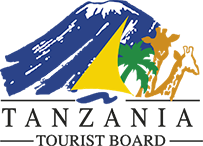Our Travel Tips
Mount Kilimanjaro routes and their variations take between five to nine days to complete. Although Mount Kilimanjaro is known as a “walk-up” mountain, you should not underestimate it and its risks. The overall statistics show that less than half of all climbers reach the summit.
A perfunctory analysis of the KINAPA (Kilimanjaro National Park Administration) records show that only 45% of climbers reach Peak Uhuru. These information is long outdated (the latest report was published in 2006), and the achievement rate has probably somewhat increased since those days because of emergence of the longer trails, improved infrastructure and equipment, increased awareness of pitfalls of choosing short treks, etc
All weather adventures recommend adding an extra day or two to your trip to help you acclimatize to the altitude. We encourage customers to take 7-9 day routes for the best chance of success and the lowest risk of altitude sickness.
Some companies boast that their overall summit success rates are greater than 90%. We have seen competitor advertisements representing overall success rates for few days trekking. It is only a matter of time before someone advertises, that why we recommended to a safe and successful climb is to take the longest routes possible
Every outfitter knows this, but unfortunately it seems some don’t mind attracting customers with misleading or blatantly false statements. The truth is that each of these figures are statistically impossible! or leading climbs only on 8-9 day routes, achieving those extraordinarily high success rates would be impossible to maintain for even a short period of time.
Aim of All weather adventure, is that you have a safe, enjoyable, memorable Kilimanjaro climb.
It is possible to climb the mountain in five or six days, but why take the chance? Some clients want to minimize their days in order to save costs, which is understandable. But we feel that the additional cost is well worth it. Not only is it safer, but you increase the probability of your success, have more time to enjoy the experience, can take acclimatization hikes to other parts of the mountain you’d otherwise miss, and will probably feel better as well, given that there is less stress on your body.
Why you travel far away to climb Mount Kilimanjaro and opt few days that reduce your success rate to summit? How would you feel if you scheduled a route with the minimum required days, only to have to turn around within the first couple days because the rate of ascent was too quick? Wouldn’t you rather have added a couple days to your trip to give yourself a better chance, to be fairer to your body? Were the ‘savings’ you got for not taking additional days worth in order of:
- Cutting cost and make your climb short,
- not making it to summit, or even worse,
- Putting your health at risk?
Recommended Duration on Different Routes
Kilimanjaro routes have varying acclimatization transition profiles, resulting in the different success rates. The best route are those, that offer “walk high-sleep low” climbing style, which is important for good acclimatization.
Lemosho Route
Lemosho is the best choice route. Being one of the least frequented, and hence the least crowded, it starts in the south-western slopes of Kilimanjaro.
Due to gradual slopes show somewhat higher successful summiting success rates, the information, which we collected from the different sources, say that Lemosho have high success rate to summit. This route should be taken into consideration to all climber especially beginners.
Distance: 56 km/35 mile
Days: 6 – 7 – 8 days on Lemosho climbs
Machame Route
The most popular Kilimanjaro climbing route, Machame has over 50% of all climbers. If you decide to choose Machame for your Kilimanjaro adventure, surely you do a right decision
This route has a incredible ‘walk-high sleep-low’ trekking style, resulting in safe acclimatization transition.
Distance: 49 km/30 mile
Days: 6- 7 days on Machame climbs
Rongai Route
Rongai Route is the only one that starts in the Northern foothills of Mount Kilimanjaro.
The ‘walk-high sleep-low’ trekking style of Rongai is more inferior to Lemosho and Machame ones.
Distance: 65 km/40 mile
Days: 6 – 7 days on Rongai
Northern Circuit Route
Opening the beauty of the Northern side of the Mount, Northern Traverse is offered by as a 9-day Kilimanjaro trekking adventure, or as a 10-day expedition with an overnight stay in the crater.
Though it is the longest and therefore a physically demanding, route on the Mount, it has an amazing acclimatization transition. It is the safest climbing option with picturesque landscapes and captivating wildlife, not to mention that together with Lemosho Route it is the least visited one, what may be important for those seeking privacy.
Distance: 90 km/56 mile
Days: 9 – 10 on days Northern circuit
Marangu Route
Marangu was the first route to be used by the climbers for Kilimanjaro climbing expeditions. It is the only route where overnight stays are in huts, and for that reason it is often chosen by the low-profile Kilimanjaro operators.
The practice, however, shows that in reality this route has one of the lowest number of climbers who reach Uhuru Peak.
Distance: 64 km/40 mile
Days: 6 – 7 days on Marangu
Umbwe Route
Umbwe Route is known to be a choice for the hardened mountaineering experts with many climbs under their belt. The route provides the fastest, yet the steepest way to Uhuru Peak with poor acclimatization transition.
There is no reliable success rate statistics on Umbwe route Kilimanjaro expeditions. What is known is that the majority of experienced mountaineers with prior acclimatization mainly reach Peak Uhuru, while the Umbwe summiting rate among the beginners is very low.
Distance: 56 km/35 mile
Days: 6 days on Umbwe
Longer Routes is a Better Choice
Many climbers often choose 5-day or 6-day treks to reduce the price. However, since Kilimanjaro climbing adventure is not cheap, though affordable, adventure overall, the difference in price for a 5 or 6-day adventure and 7-day one is not overly significant. Apart from safeguarding your organism against unnecessary distress, spending one or two days more on Kilimanjaro will you a chance to explore the areas, which may otherwise escape your attention.
Furthermore, as we illustrated above, taking a shorter adventure in an attempt to save costs may put at risk the whole adventure. After all, obviously the purpose of your Tanzanian adventure is actually to reach the Peak of Africa. Though the trek itself is a attractive adventure, jeopardizing the sense of a lifetime achievement of reaching Uhuru Peak does not justify the economy.
Overall, you should take the question “how long to climb Mount Kilimanjaro” very seriously. However unimportant it may seem, deciding how many days to climb Kilimanjaro is one of the most important elements of your travel preparations.




